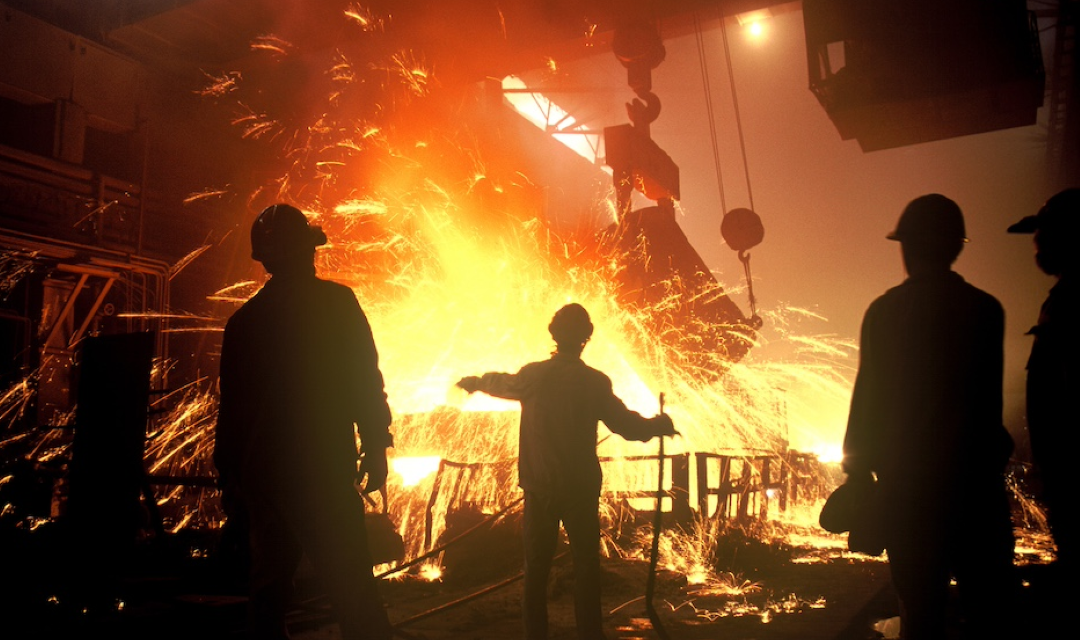Industrial evolution: EPP researchers simulate workforce impact
Abby Verret
May 7, 2025

The adoption of decarbonized production methods in heavy manufacturing industries is widely considered a key step toward global climate change mitigation. For communities where these industries have a strong presence, the workforce implications of decarbonization can feel just as significant, and more immediate.
Researchers in Carnegie Mellon University’s College of Engineering have developed a generalizable approach for analyzing the impact of such decarbonization scenarios on a region’s workforce.
“Our research approach aims to reduce uncertainty and help stakeholders plan for a technology transition rather than being blindsided by impacts that they may not have anticipated or projected,” said Valerie Karplus, professor of engineering and public policy (EPP) and associate director of the Scott Institute for Energy Innovation.
In a recent study published in PNAS, the researchers used their multi-step methodology to simulate the impact of such a transition on the existing steel industry workforce in Southwestern Pennsylvania. They looked at the workforce impact of transitioning from integrated steelmaking, a greenhouse gas (GHG) emissions-intensive process, to electric arc furnace (EAF) production, with or without a direct-reduced iron plant to supplement steel scrap as an iron input on the same site.
Replacing integrated steel plants with EAFs is possible today for a growing range of steel products. EAF steelmaking in the United States is already more common than the integrated route, which is one reason why steel produced in the United States has a lower GHG footprint on average than its global counterparts. Iron and steelmaking account for 2% of GHG emissions in the United States, and around 7% of global GHG emissions.
Still, such transitions have historically led to major workforce disruptions in local economies. The approach the CMU team developed can help communities to navigate these transitions by providing a common fact base for stakeholders to work from and plan for coming change, potentially avoiding or addressing its most negative effects.
“Often there are frictions to advancing decarbonization efforts because of uncertainty in job outcomes,” said Jillian Miles, a Ph.D. student in EPP and lead author on the paper. “This research can help quantify and clarify those effects.”
The team’s analysis suggests that the current integrated steelmaking workforce has the skills, knowledge, and abilities to fill more than 95% of the jobs required by an EAF facility. However, the number of jobs at such a plant is only 25% of what an integrated plant requires. Further, while some types of workers would have high chances of success in the broader labor market, some groups - such as production workers - may be unlikely to find positions that match their skills, knowledge, and abilities while maintaining their approximate salaries and geographic location.
This is a repeated problem that looks a little different each time. We have built the capacity to attack these problems rapidly. We can identify which groups will be most vulnerable and get ahead of these impacts.
Christophe Combemale, Assistant Research Professor, Engineering and Public Policy
These findings may sound alarming on their own, but the methodology the engineers developed can empower lawmakers, workforce boards, and other relevant entities to create proactive plans based on realistic outcomes.
“The case is one of a specific steel plant in Southwestern Pennsylvania, but the big picture is, industrial decarbonization and other industry transformations will affect the composition of labor in U.S. manufacturing and work environments,” said Christophe Combemale, assistant research professor in EPP and co-lead of the Workforce Supply Chains Initiative at the Block Center for Technology and Society.
“This is a repeated problem that looks a little different each time, and what we have built is the capacity to attack these kinds of problems rapidly,” he added. “We can identify which occupations and groups will be the most vulnerable and get ahead of these impacts, ideally before they are felt.”
Crucially, the researchers are already working with local stakeholders to ensure the findings of the study are impactful.
“This work involves industry partners, community organizations, workforce boards, and policy makers, and we communicate our findings to them on a regular basis,” said Karplus. “Our goal is for this analysis to develop a shared understanding of the challenges and solutions, both for iron and steel and for other contexts. We expect a strong use case for this approach in the Southwest Pennsylvania region and other regions with a strong existing or anticipated industry presence.”
The team has applied the methodology to examine readiness of regions in the United States to host battery manufacturing plants and has also started working with areas that historically relied heavily on coal mining to explore how the approach can inform future workforce strategy, Miles noted.
Chris Pistorius, associate department head and POSCO professor in the Department of Materials Science and Engineering, also contributed to this research.
This work was supported by the Henry L. Hillman Foundation through the CMU Industrial Decarbonization Initiative at the Wilton E. Scott Institute for Energy Innovation, a NSF Graduate Research Fellowship, the Richard King Mellon Foundation, and the Advanced Robotics Manufacturing Institute through the Workforce Supply Chains Initiative at the Block Center.